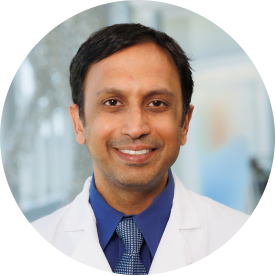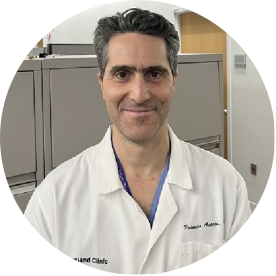Special Interview with Prof. Amit Singal, UT Southwestern Medical Center
On August 6, 2025, the Editorial Office of Hepatoma Research conducted an interview with Prof. Amit G. Singal from the University of Texas Southwestern Medical Center, USA. The interviewer was Prof. Federico N. Aucejo from the Cleveland Clinic, USA, a Junior Editor Board member of Hepatoma Research.
This insightful discussion focused on recent developments in hepatocellular carcinoma (HCC) screening, particularly the shift toward precision screening strategies and the need for validated risk-stratification models. Prof. Singal shared updates from the GALAD and Tracer studies, as well as progress in blood-based markers for assessing cirrhosis risk. He also discussed clinical management strategies for patients with initially unresectable HCC who respond to immunotherapy, including potential surgical resection and transplantation after downstaging.
The conversation further addressed disparities in HCC care, highlighting barriers such as medical mistrust, limited health literacy, and financial constraints, while emphasizing the importance of addressing social determinants of health. As Chair of the ILCA 2025 Scientific Committee, Prof. Singal highlighted the meeting’s role in bridging basic science, translational research, and clinical practice worldwide. The session concluded with updates on collaborative initiatives, including the forthcoming ILCA white paper on risk stratification and ongoing multi-institutional studies.
Questions
1. You are a leading expert in HCC screening and early detection. In your recent work, there has been a strong focus on biomarker-driven strategies. How do you envision the role of precision surveillance evolving in clinical practice over the next 3–5 years?
2. The GALAD biomarker panel has shown promising results in identifying early-stage HCC. Could you share the latest validation results and how GALAD or similar tools might complement—or even replace—traditional imaging-based surveillance?
3. Your research has emphasized disparities in HCC care related to social determinants of health. What are the most critical barriers you’ve identified, and which interventions have proven most effective in improving surveillance uptake among underserved populations?
4. You have worked extensively on risk stratification models in cirrhosis populations. How close are we to implementing personalized HCC screening protocols in real-world health systems, and what barriers remain?
5. As Chair of the ILCA 2025 Scientific Committee, could you share the key scientific priorities of this year’s meeting, and how the program fosters cross-disciplinary dialogue—particularly among basic researchers, clinicians, and implementation scientists—to address emerging challenges in liver cancer?
6. Looking forward, what do you believe will be the next breakthrough in HCC research—whether in prevention, early detection, or treatment—that could significantly impact patient outcomes globally?
Interviewee

Amit G. Singal, M.D., M.S., is Professor of Medicine in the Department of Internal Medicine at UT Southwestern, where he serves as Chief of Hepatology and Medical Director of the Liver Tumor Program. He holds the Dedman Family Scholar in Clinical Care distinction and the Willis C. Maddrey, M.D., Distinguished Chair in Liver Disease.
His research focuses on HCC prevention, surveillance, early detection, and treatment, supported by funding from the NIH, CPRIT, and the U.S. Department of Defense. He has published over 200 peer-reviewed articles and is an active member of AASLD, AGA, ACG, and ILCA, holding leadership roles in guideline development and committee service.
Interviewer

Federico N. Aucejo, M.D., is a hepatobiliary and liver transplant surgeon at the Cleveland Clinic and a member of multiple professional societies, including AHPBA, IHPBA, SSO, SSAT, ASTS, The Transplant Society, ILTS, and AASLD. His research covers liver surgery techniques, outcomes in liver malignancies, and translational studies in HCC.
Managing Editor: Victoria Lee
Language Editor: Catherine Yang
Production Editor: Ting Xu
Respectfully Submitted by the Editorial Office of Hepatoma Research







